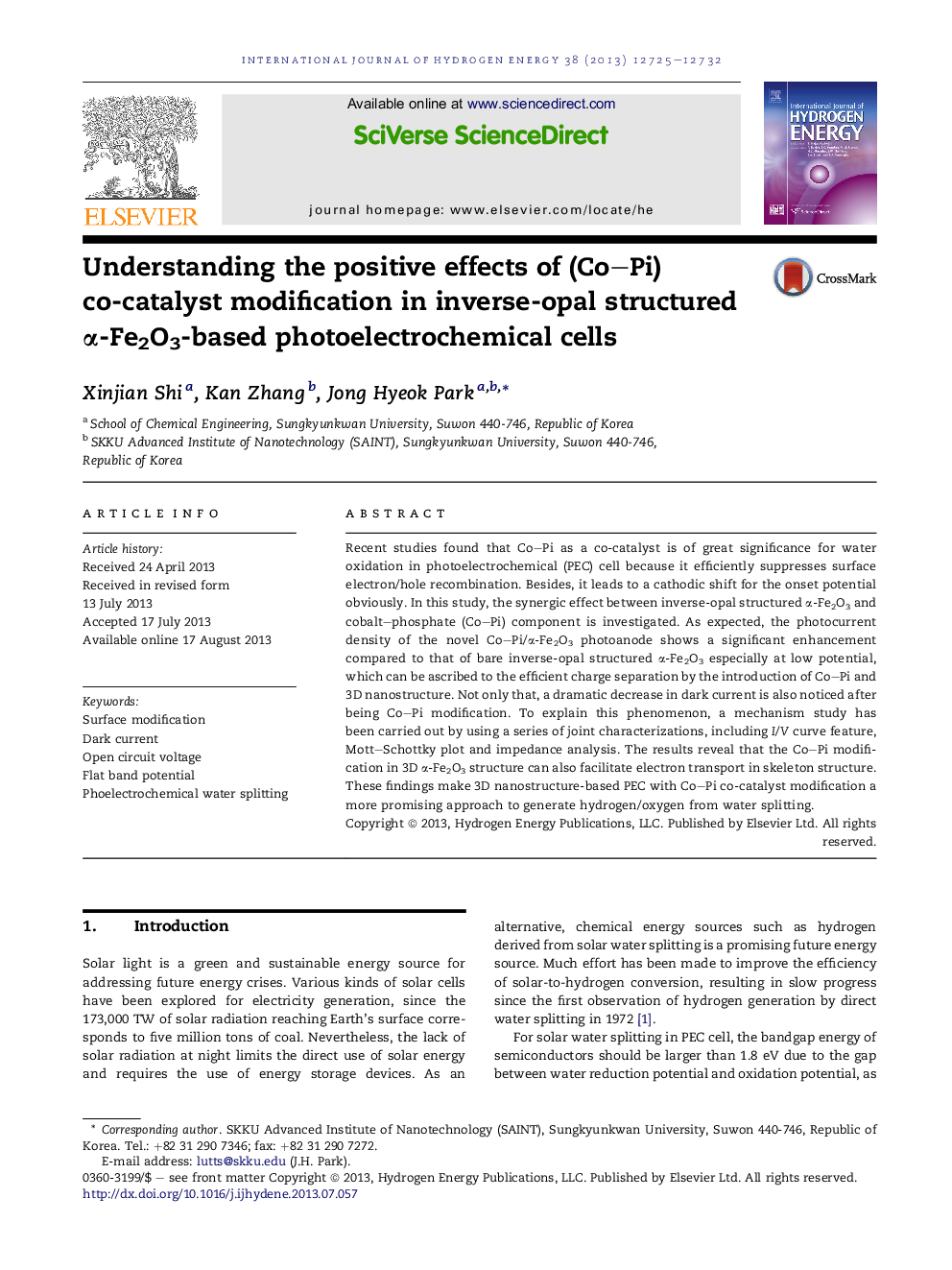| Article ID | Journal | Published Year | Pages | File Type |
|---|---|---|---|---|
| 7721412 | International Journal of Hydrogen Energy | 2013 | 8 Pages |
Abstract
Recent studies found that Co-Pi as a co-catalyst is of great significance for water oxidation in photoelectrochemical (PEC) cell because it efficiently suppresses surface electron/hole recombination. Besides, it leads to a cathodic shift for the onset potential obviously. In this study, the synergic effect between inverse-opal structured α-Fe2O3 and cobalt-phosphate (Co-Pi) component is investigated. As expected, the photocurrent density of the novel Co-Pi/α-Fe2O3 photoanode shows a significant enhancement compared to that of bare inverse-opal structured α-Fe2O3 especially at low potential, which can be ascribed to the efficient charge separation by the introduction of Co-Pi and 3D nanostructure. Not only that, a dramatic decrease in dark current is also noticed after being Co-Pi modification. To explain this phenomenon, a mechanism study has been carried out by using a series of joint characterizations, including I/V curve feature, Mott-Schottky plot and impedance analysis. The results reveal that the Co-Pi modification in 3D α-Fe2O3 structure can also facilitate electron transport in skeleton structure. These findings make 3D nanostructure-based PEC with Co-Pi co-catalyst modification a more promising approach to generate hydrogen/oxygen from water splitting.
Related Topics
Physical Sciences and Engineering
Chemistry
Electrochemistry
Authors
Xinjian Shi, Kan Zhang, Jong Hyeok Park,
